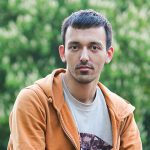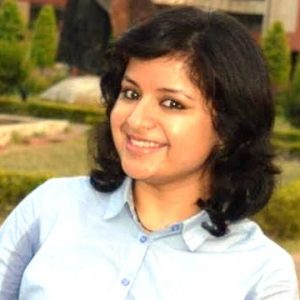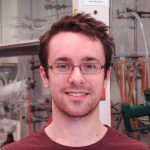“Windy Cities” consists of 12 PhD projects that are awarded in form of scholarships. The thematically interconnected projects complement each other. They are assigned to the three main topics simulation/visualization, wind energy and energy storage.
Focus Simulation/ Visualization
| SUPERVISOR TANDEM | NO. | DISSERTATION TOPIC |
| Prof. Dr. Coors Prof. Dr. Ertl |
1.1 | 3D geodata server for urban flow simulation The project focus lies on research and development of an urban information model for data integration, based on a 3D city model. This includes data preparation for the flow simulation project (Voss), the integration of spatial and time-dependent data, in particular of flow simulation data (vector field) and measured data of wind flow and power output of small wind turbines. As an interface for the project “Interactive analysis and visualization” (Ertl) the contained Specification OGC standard 3D Portrayal Service will be evaluated.
PhD. Commission Scholarship holder |
| Prof. Dr. Coors Prof. Dr. Ertl |
1.2 | Visual analysis of geospatial sensor data streams In this project the interactive visual analysis of spatial sensor data streams will be explored and evaluated. In the context of Windy Cities a variety of space-related sensor data such as weather information, power generation, storage and consumption are recorded. The data streams captured need to be analyzed in real time and filtered through stream-based algorithms for relevant information. In this context, information is to be understood as entropy of a message (after Shannon). Complex relationships between various sensor data streams are often better understood by appropriate visualization than by purely statistical methods. For this purpose different visualization techniques such as parallel coordinates Hyperbolic Trees and tree maps are tested in the geospatial context. Goal of the data flow analysis and visualization is the monitoring and optimal control of small wind turbines as well as the distribution network, including CO2-based hydrogen batteries.
PhD. Commission Scholarship holder |
| Prof. Dr. Eicker Prof. Dr. Ertl |
1.3 | Intelligent control and load management for the local and community context Local wind power generation in combination with heat pumps is particularly well adapted to the high energy demand of buildings especially in winter. An effective load management offers high potentials to selectively increase the wind power supply using intelligent control algorithms while the buildings energy need is increased as well and to use the available storage potentials. The excess power, which is not directly usable, can be converted to hydrogen and stored with innovative memory technologies for future use. The object of the work is the development of system models of generators, storage and consumers, with which systematically control strategies for the components as well as overall strategic energy management can be studied. In particular for the innovative system components, such as the reactive hydrogen battery control, new strategies need to be developed. Those will allow the activation of individual micro reactors, thereby optimally respond to both current peak storage and load profile maxima and be able to save even small amounts of electricity from small wind turbines efficiently. The goal is a significant increase of flexibilities in the electricity sector through the targeted activation of storage and consume in the building sector. Via the control of whole building groups in neighborhoods high power sinks are provided, which dynamically respond to fluctuating renewable power generation.
PhD. Commission University of Stuttgart, Faculty of computer science, electrical engineering and information technology, Dr.rer.nat. Scholarship holder |
| Prof. Dr. Voss Prof. Dr. Krämer |
1.4 | CFD-based design and control of small wind turbines in urban environment Focus of the subproject is numerical simulation of urban wind conditions for the prediction the potential as well as design and control of small wind turbines. Required output parameters of simulation are the relevant wind parameters: average and local wind speed and direction at different heights and the pressure distribution on buildings. For the CFD simulations an appropriate computational grid has to be constructed for the city models provided in the subproject “Geodata server”. The different spatial and temporal scales must be represented in the physical model and the numerical method with sufficient accuracy. The turbulence model plays an important role in such must be investigated systematically. To validate the calculation results measurement results from the subproject “Modelling of the wind field and the wind energy potential in an urban environment by means of LiDAR (Cheng / Neuburger)” are used. Objective of the simulation is the generation of velocity and pressure profiles covering a large area and the characterization of suitable locations and operating parameters of small wind turbines in urban areas. Moreover, this subproject makes a significant contribution to the requirements in the subproject “Web-based visual analysis of flows in city models” and applies the procedures and tools developed there.
PhD. Commission Scholarship holder Tel.: +49 (0)711 89262307 |
| Prof. Dr. Krämer Prof. Dr. Voss |
1.5 | Loads and performance of small wind turbines in urban environment Due to complex instationary and spatially varying inflow conditions, the dynamic loads and the yield of small wind turbines in urban areas differ significantly from those in flat terrain. In this thesis, high temporal and spatial resolution CFD simulations of small wind turbines, which are installed on exposed buildings in urban environment, shall be performed. To that end, a relevant part of the urban area shall be considered, utilizing the numerical grids from Prof. Coors‘ project. The local inflow conditions shall be taken from global simulations performed in the project of Prof. Voß.
LiDAR measurements done in the project of Prof. Cheng shall be used to validate the flow field in the vicinity of the turbine. In the current project, the occurring flow phenomena at the turbine shall be investigated in detail by numerical simulations, making use of the visualization software developed in the project of Prof. Ertl. In a first step, the simulations shall be carried out for a generic wind turbine. The impact of the development on the yield as well as on the dynamic loads, which determine the life cycle of the turbine, shall be investigated and compared to results for the turbine operating in flat terrain. Thereafter, the wind turbine optimized in Prof. Neuburger’s project for operation in urban environment shall be considered and the improvements shall be demonstrated. PhD. Commission Scholarship holder |
| Prof. Dr. Ertl Prof. Dr. Coors |
1.6 | Web-based visual analysis of flows in city models Research and development of visualization techniques for the analysis of flow behavior in the context of 3D city models; adaptive methods and hierarchical approaches which also allows an interactive analysis of large data sets and complex geometries; visual metaphors for laymen (lines and glyphs) and experts (topological analysis, coherent structures); Support for various target platforms: high-resolution displays (Power Wall) to web applications on mobile devices; comparative and integrative visualization of simulation results and measured values; Interface for geodata server (project Coors).
PhD. Commission |
Focus Wind Energy
Focus Energy Storage
| SUPERVISOR TANDEM |
NO. | DISSERTATION TOPIC |
| Prof. Dr. Plietker Prof. Dr. Klemm |
3.1 | Development of immobilized Ru-based catalysts for the hydrogenation-dehydrogenation of CO2 The chemical reduction of CO2 to formic acid, methanol, or dimethyether allows the efficient storage of explosive hydrogen gas. The lack of efficient but also safe storage system represents the current bottle-neck for the introduction of fuel cell technology both in industry as well as in private life. Different from existing technologies (cryo-cooled H2, adsorptive gas storage systems) the existing infrastructures (pipelines, railsystem, etc.) can be used. Hence, the energy can be transformed from electric energy (produced e.g. using wind power engines) into chemical energy (i.e. atom bonds). In order to adopt to the different sizes of the wind mills (and hence to the different amount of electric energy that is produced) microreactor technology needs to be developed. The implementation of microreactors into micro-smart-grid arrays will allow to react flexible to the amount of energy that is produced, independent on the size of the wind mill. In order to develop this technology several problems need to be solved.
In this project, starting from the existing catalyst prototypes, modified (PNPP) Ru complexes PhD. Commission Scholarship holder
Pascal Eisele |
| Prof. Dr. Plietker Prof. Dr. Klemm, Prof. Dr. Neuburger |
3.2 | Development of Fe-catalysts for the electrochemical water splitting The chemical reduction of CO2 to formic acid, methanol, or dimethyether allows the efficient storage of explosive hydrogen gas. The lack of efficient but also safe storage system represents the current bottle-neck for the introduction of fuel cell technology both in industry as well as in private life. Different from existing technologies (cryo-cooled H2, adsorptive gas storage systems) the existing infrastructures (pipelines, railsystem, etc.) can be used. Hence, the energy can be transformed from electric energy (produced e.g. using wind power engines) into chemical energy (i.e. atom bonds). In order to adopt to the different sizes of the wind mills (and hence to the different amount of electric energy that is produced) microreactor technology needs to be developed. The implementation of microreactors into micro-smart-grid arrays will allow to react flexible to the amount of energy that is produced, independent on the size of the wind mill. In order to develop this technology several problems need to be solved.
In this project, [Fe] -, or [FeFe] – hydrogenase mimics will be developed and examined with respect to their catalytic activity in the electrochemical water splitting (Proton reduction) in close cooperation with the working group of Prof. Klemm and Prof. Neuburger. The implementation of the catalysts in micro (electrolysis) reactors and crosslinking within the memory modules are done in close consultation with the AG Neuburger (wind energy) and AG Eicker (networking). PhD. Commission Scholarship holder |
| Prof. Dr. Klemm Prof. Dr. Plietker |
3.3 | Reaction Engineering Investigations of a CO2 based hydrogen battery In close collaboration with the group of Prof. Plietker, Institute of Organic Chemistry, molecular catalysts such as Ru-PNNP catalysts are used to store chemically electricity by converting carbon dioxide into formic acid. In principle, there are three possibilities:
In all cases the molecular catalyst can be used in homogeneous phase present in the electrolyte or it can be used in heterogeneous phase by anchoring to the electrode. The routes will be characterized by polarization curves to determine the optimum potential. Galvanostatic and potentiostatic measurements allow the evaluation ot the time behaviour and the determination of current densities, energy and Faraday efficiencies. The number of cycles are relevant for the application of the cell to store electricity and use it as a battery. PhD. Commission Scholarship holder |
| Prof. Dr. Eicker Prof. Dr. Plietker |
3. 4 | System integration of wind power in local energy systems with power to gas and reactive hydrogen batteries Not directly used wind and solar power must be integrated into the energy system in order to avoid a shutdown of the power generators due to very high long term renewable energy shares in the electric network. Given power to gas technologies with innovative chemical hydrogen storage and reconversion through fuel cells or direct use in the transport sector are systemically analyzed and evaluated. For the energetically, environmentally and economically evaluation of different technology combinations new system models need to be developed, including generators, storage and consumers. These models need to be able to map the dynamics of fluctuating power generation to develop appropriate control strategies for the energy system.
PhD. Commission University of Stuttgart, Faculty for chemistry, Dr.rer.nat. Scholarship holder |










